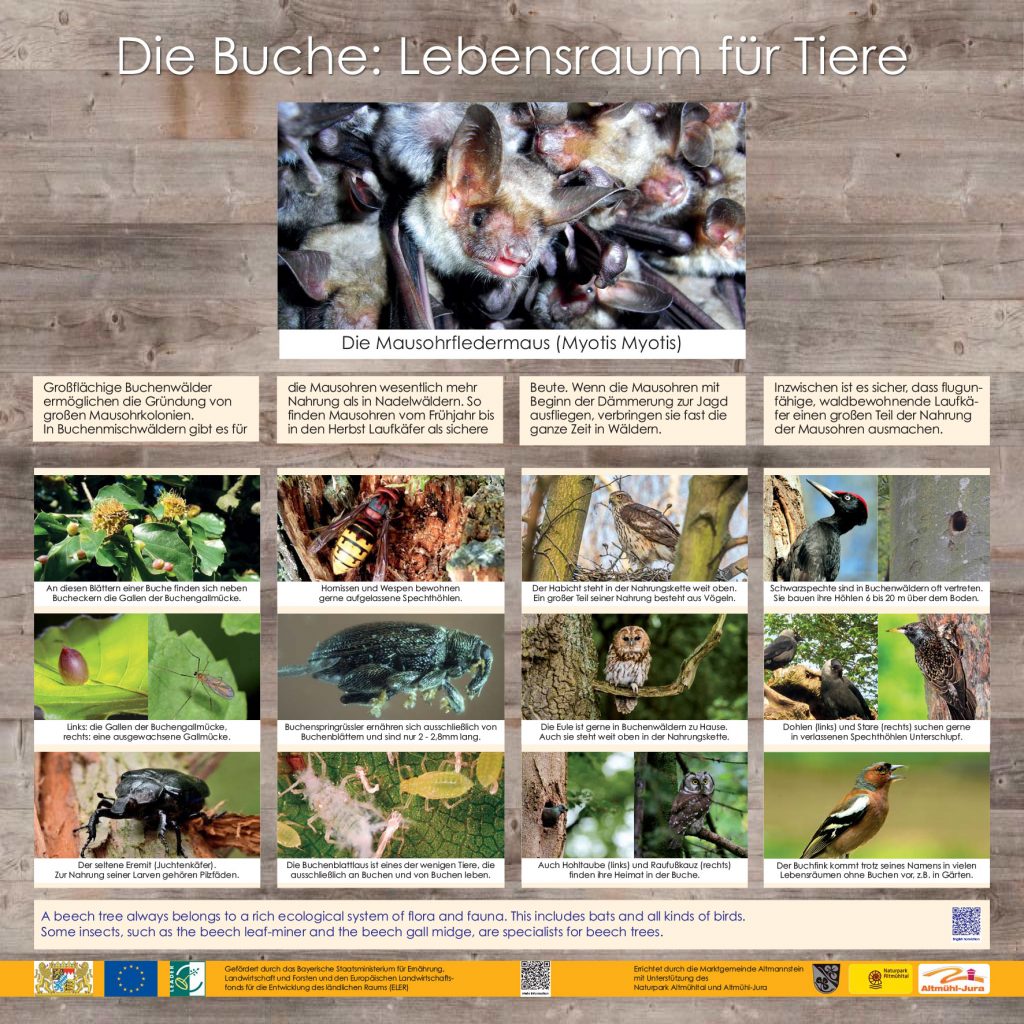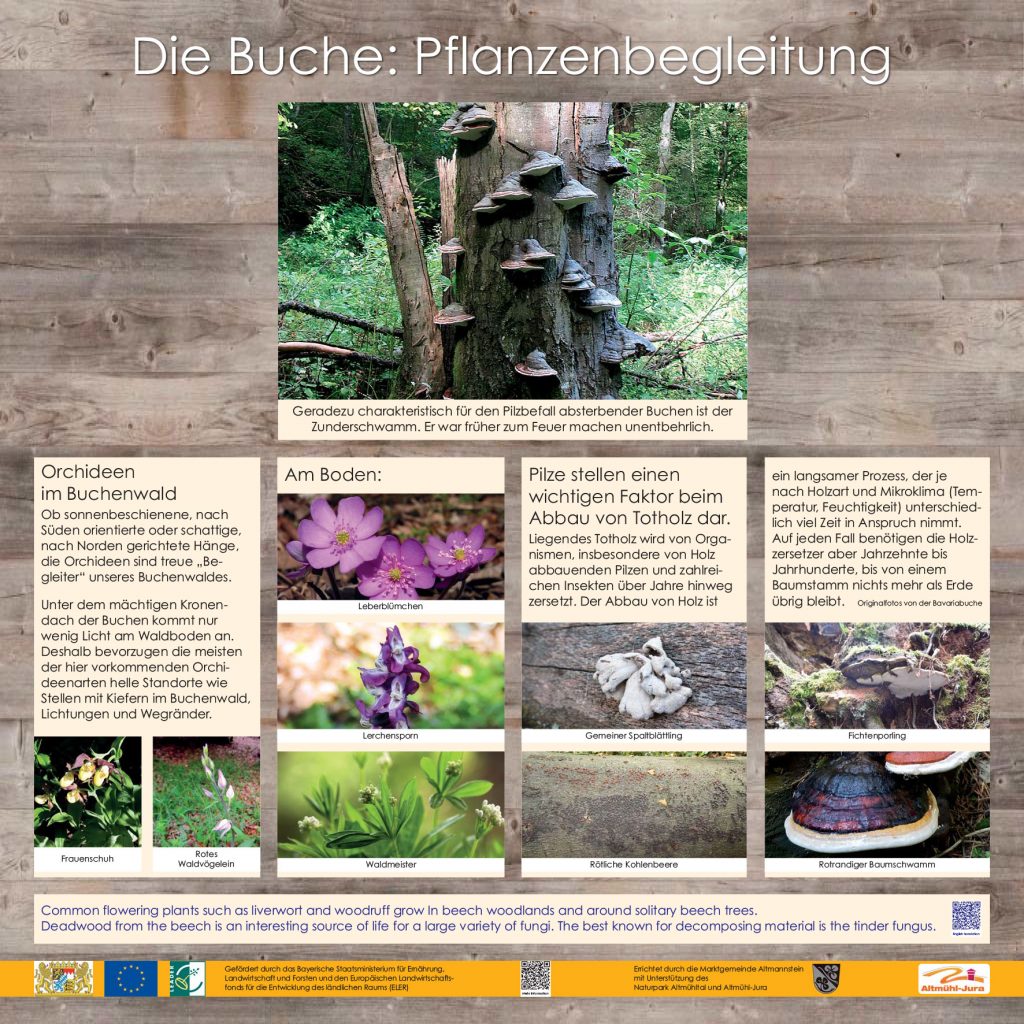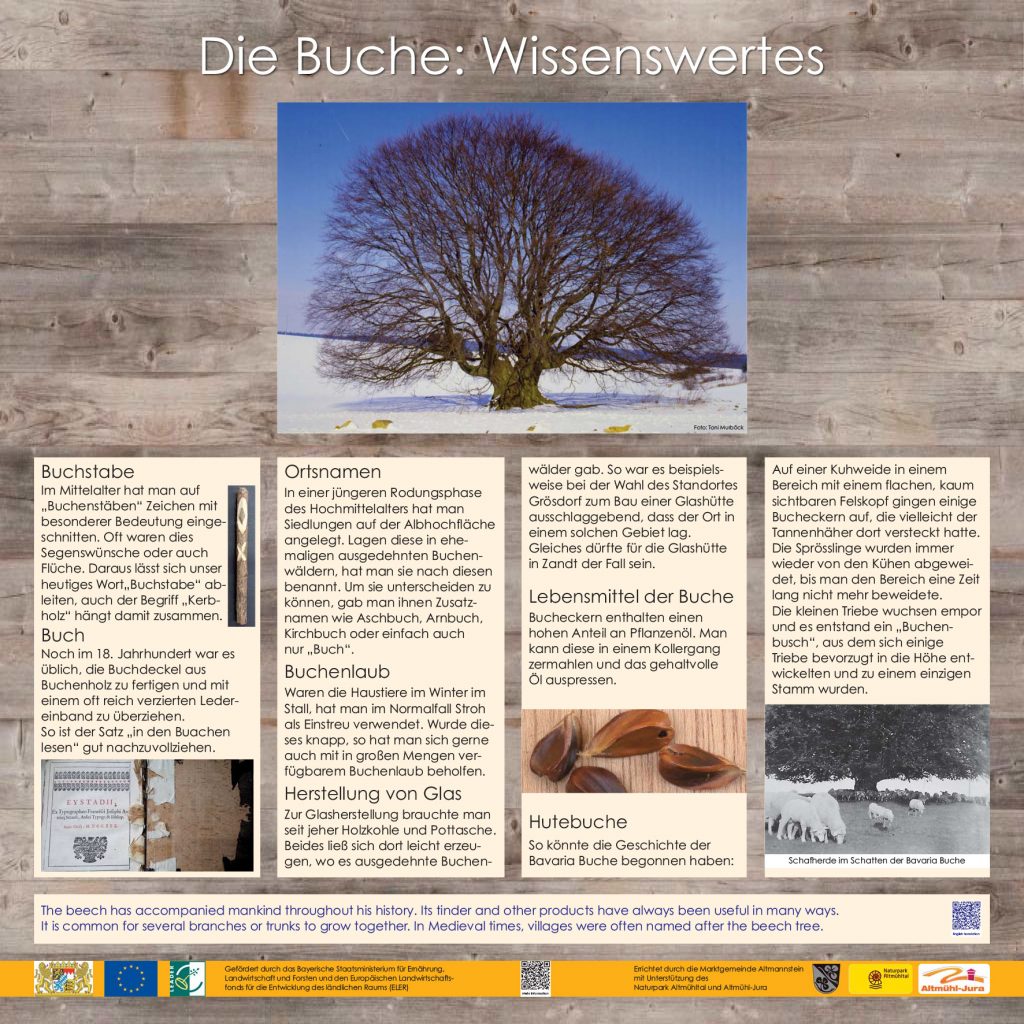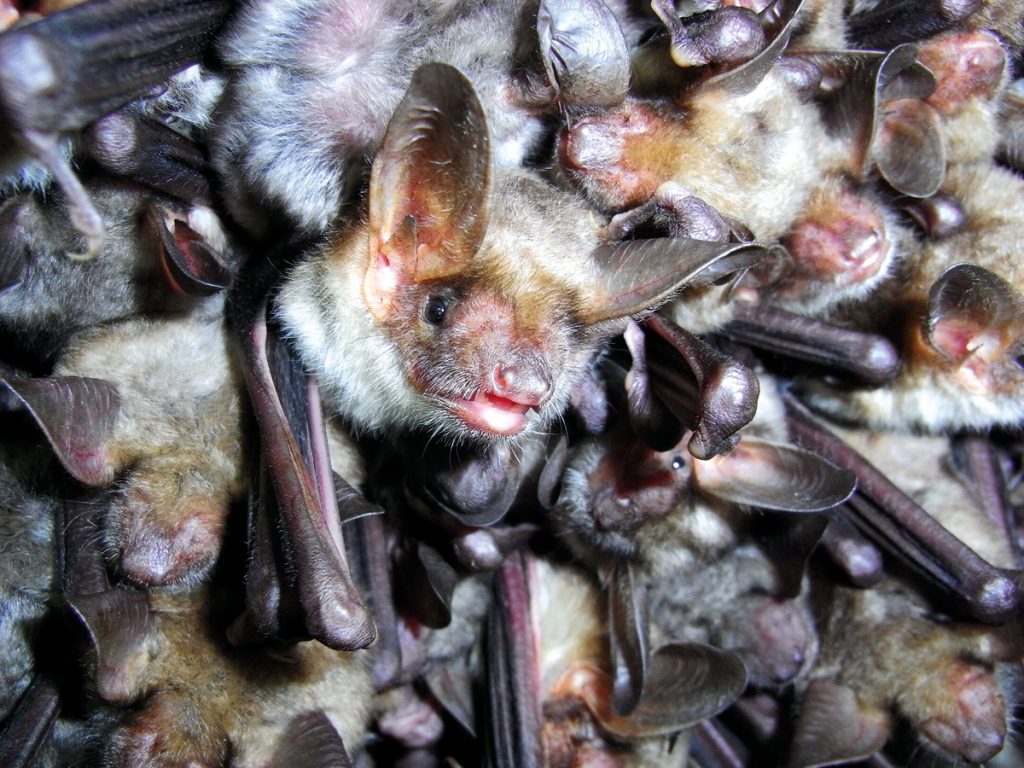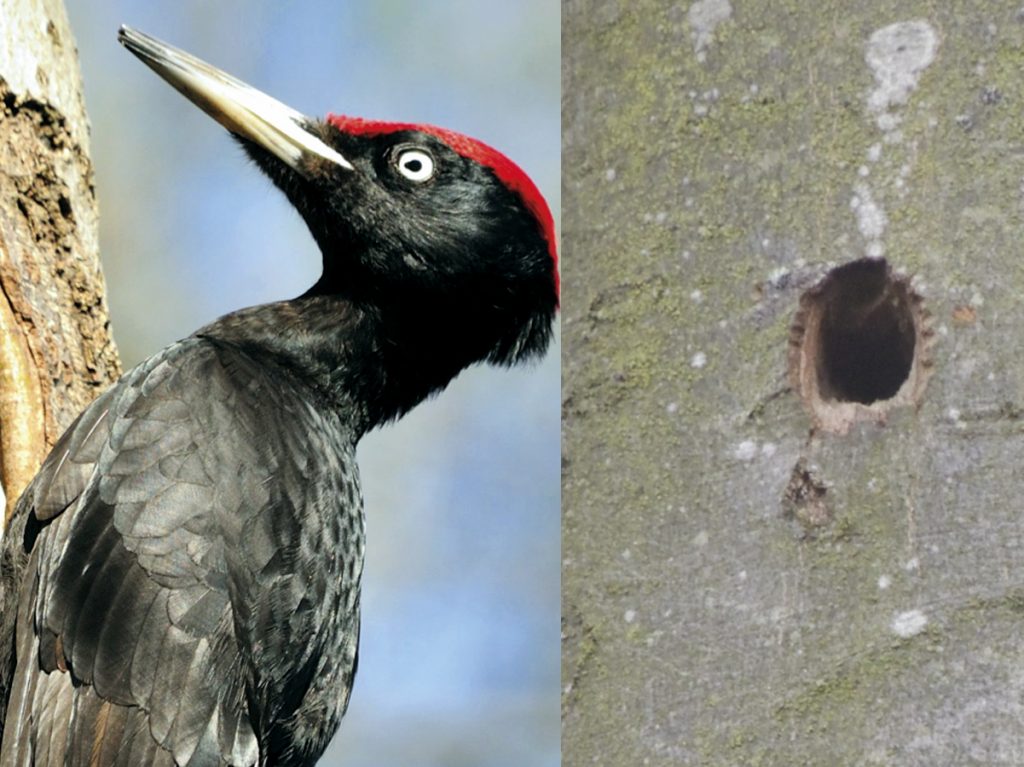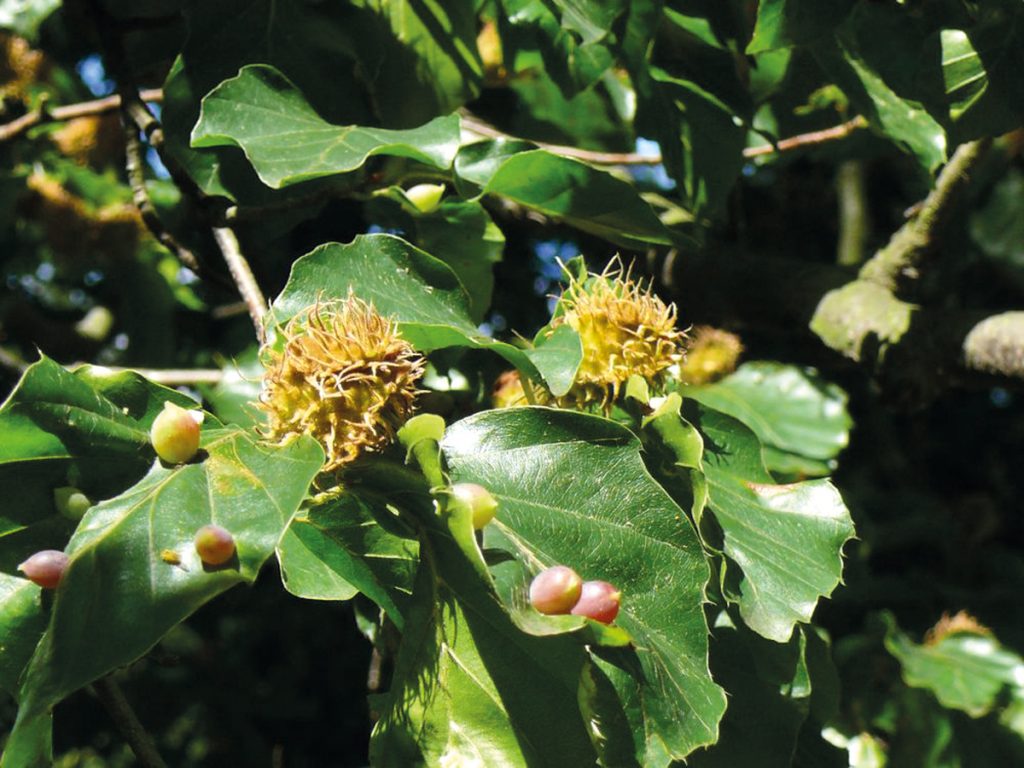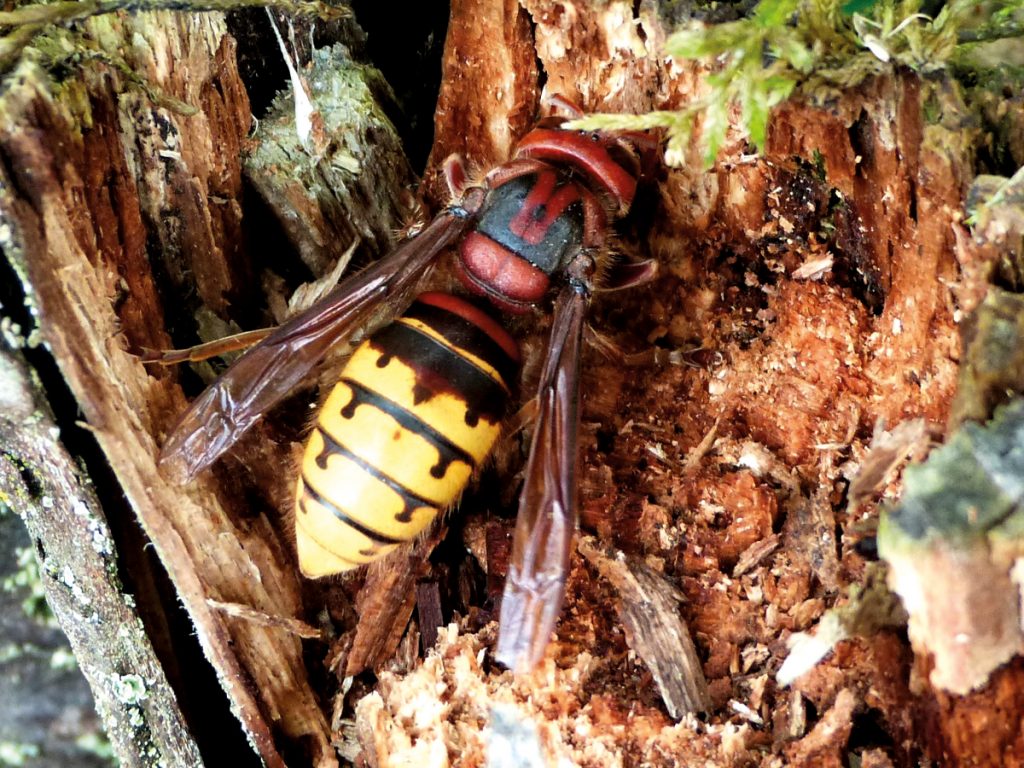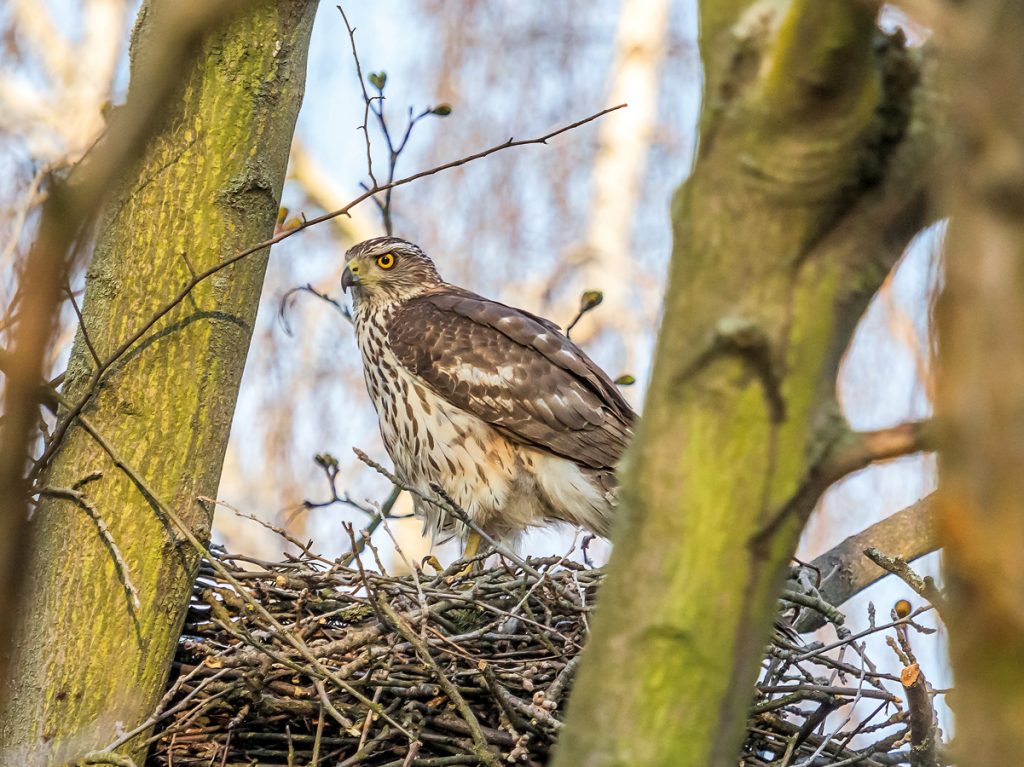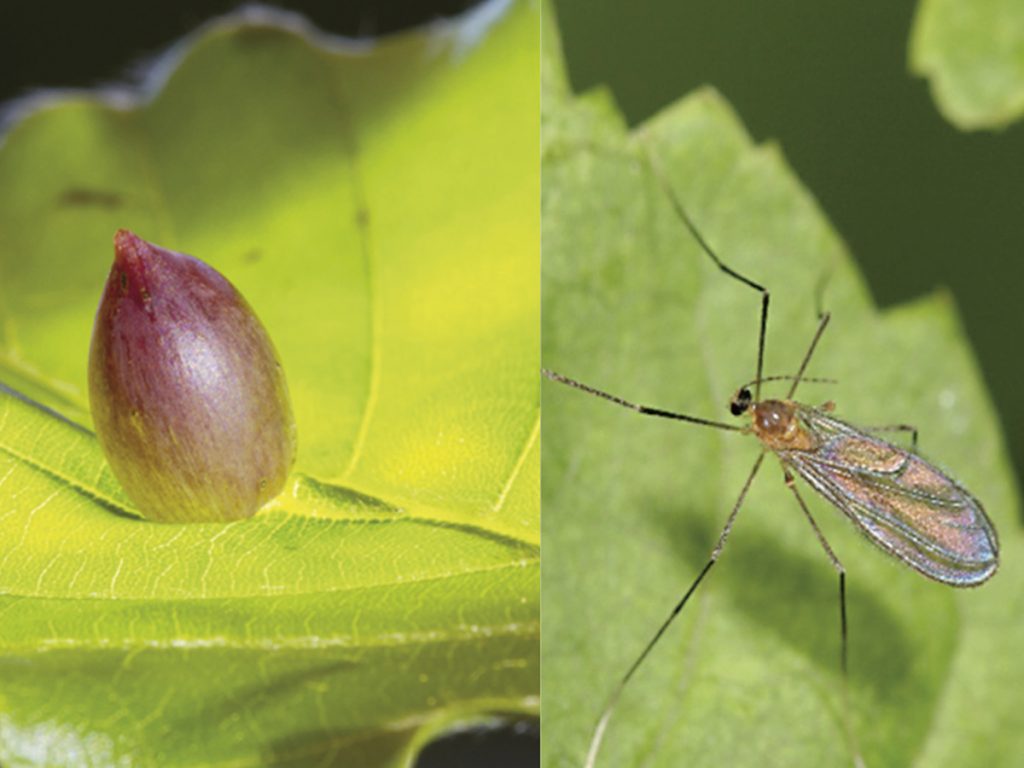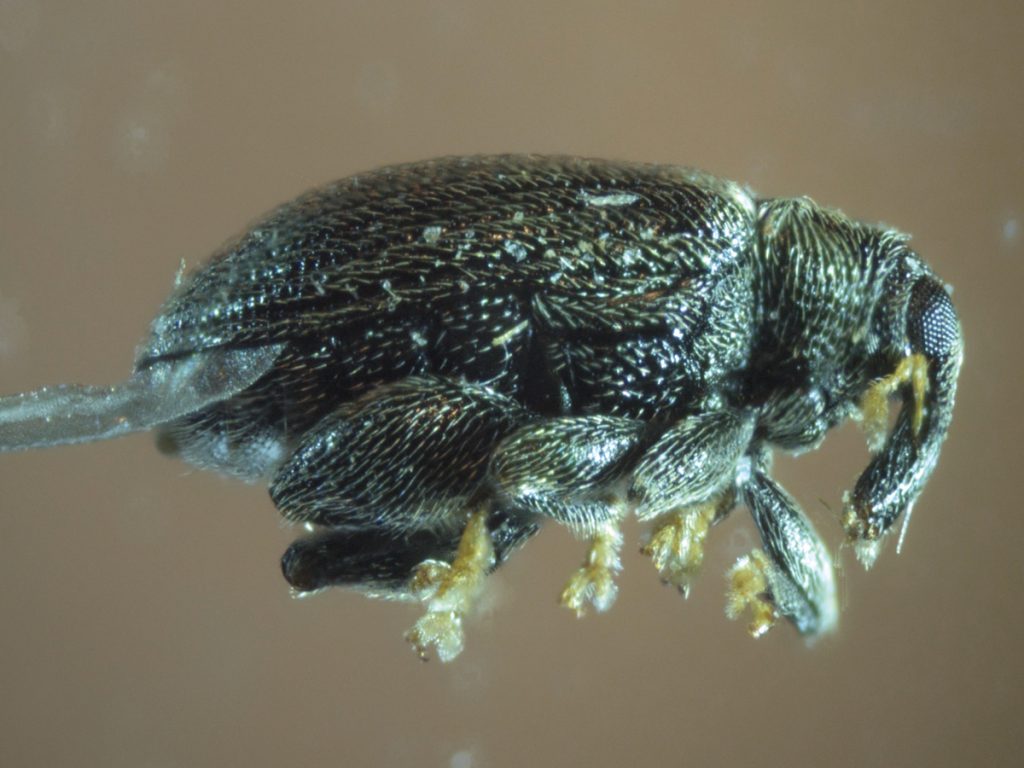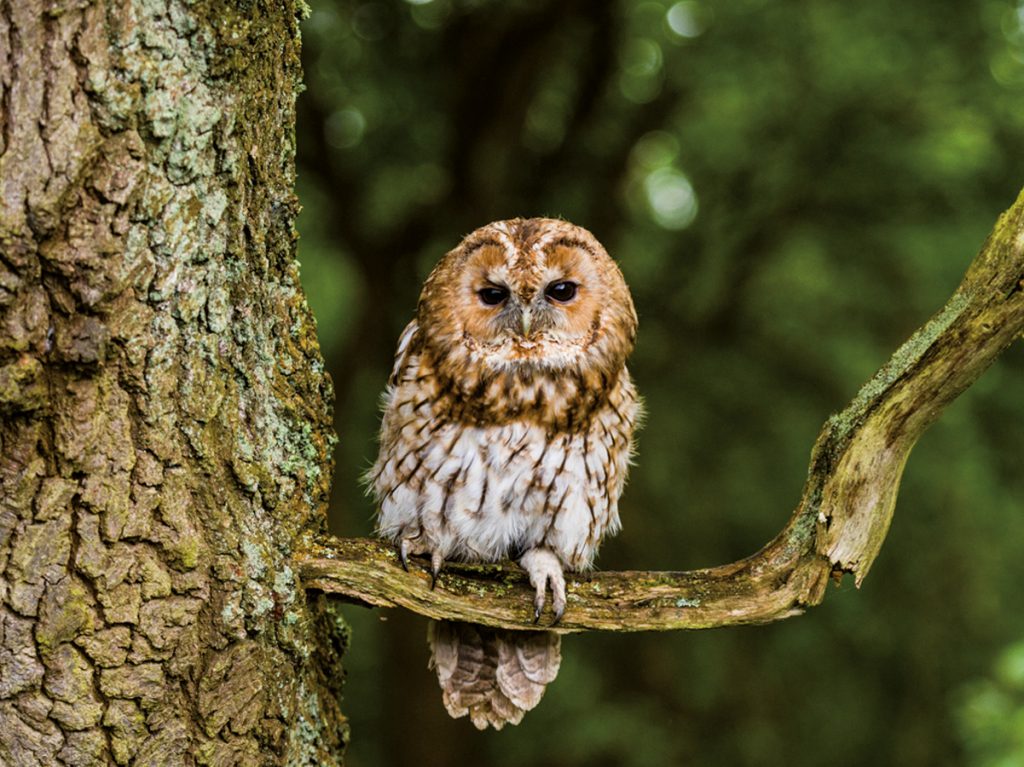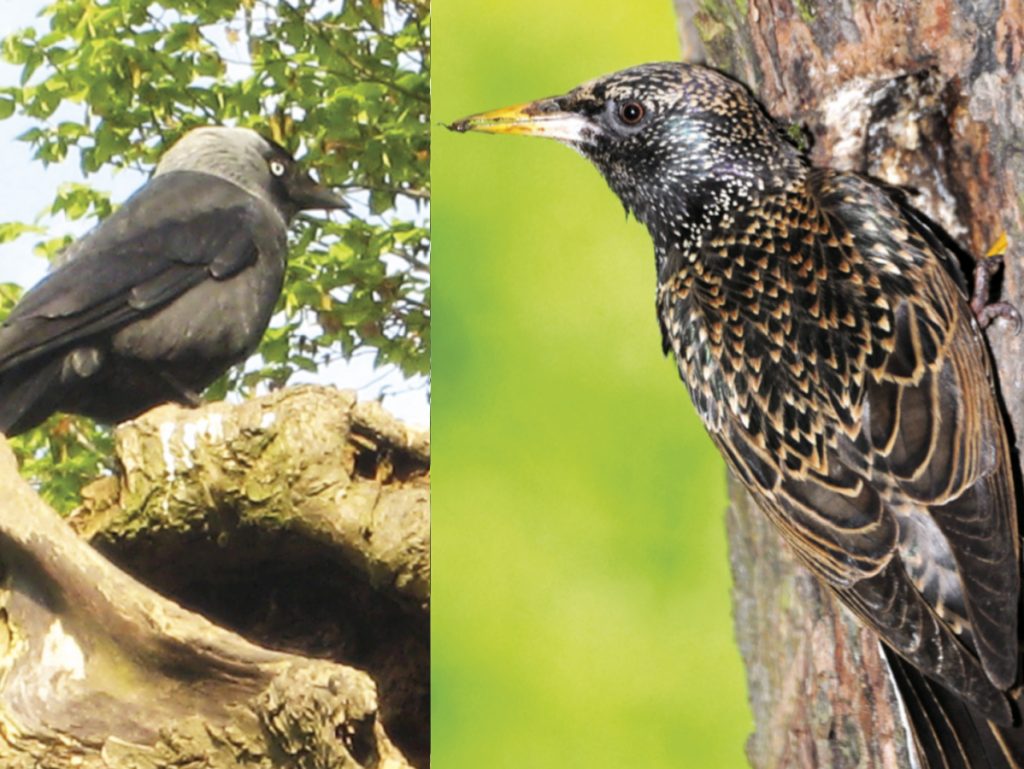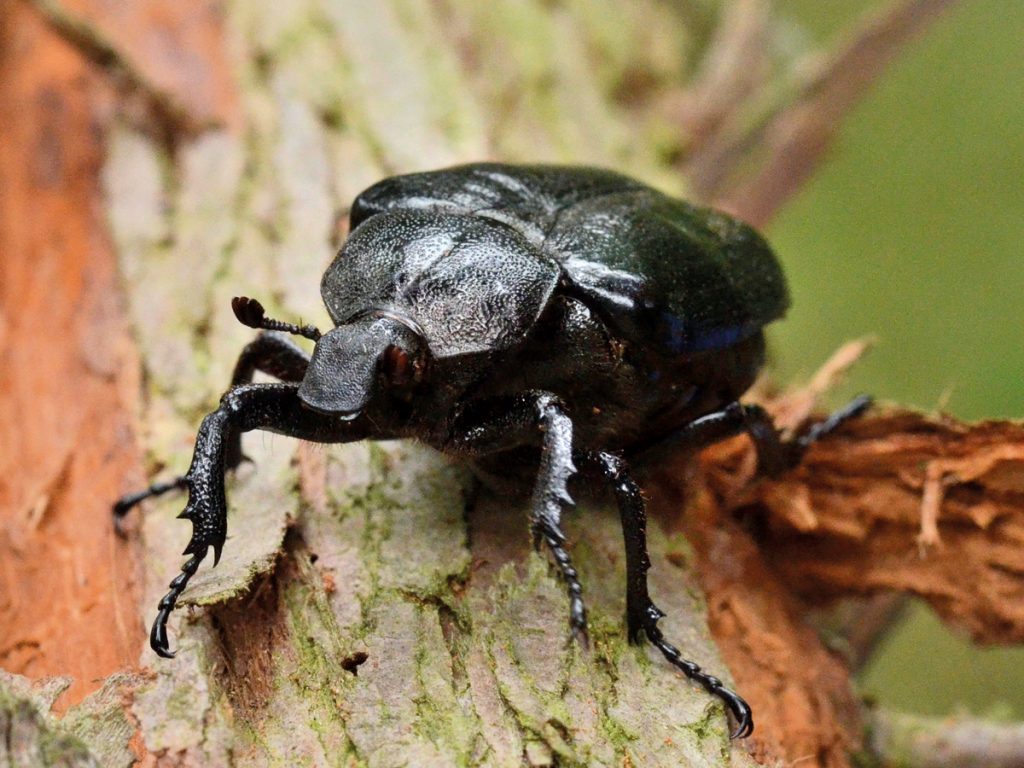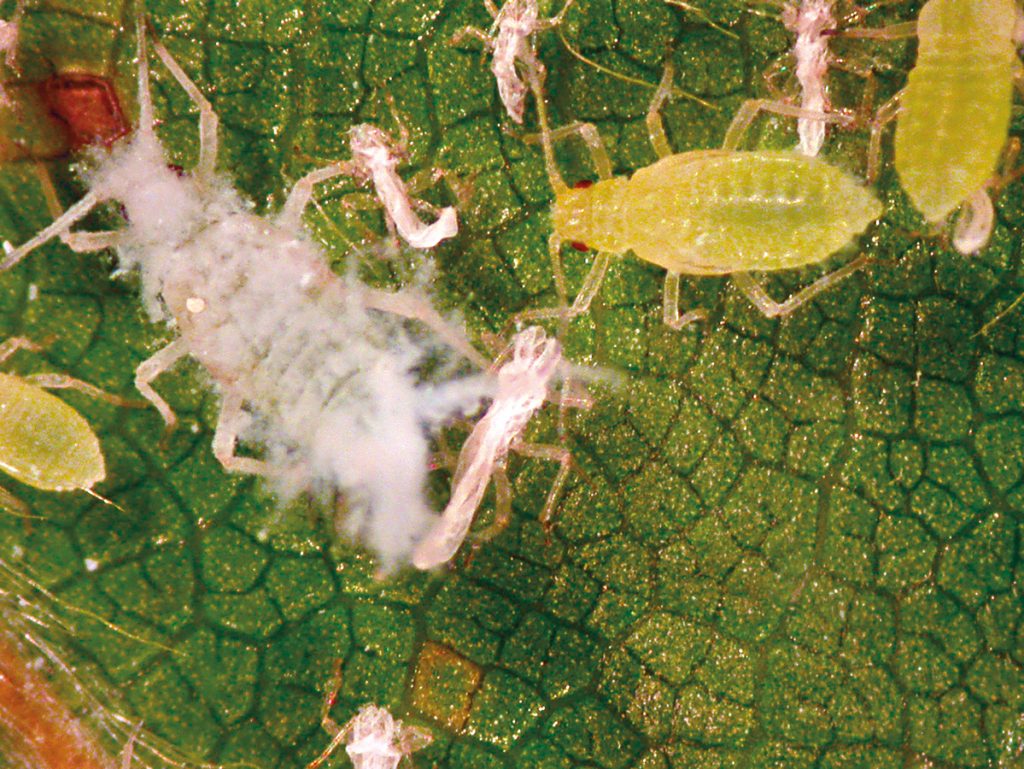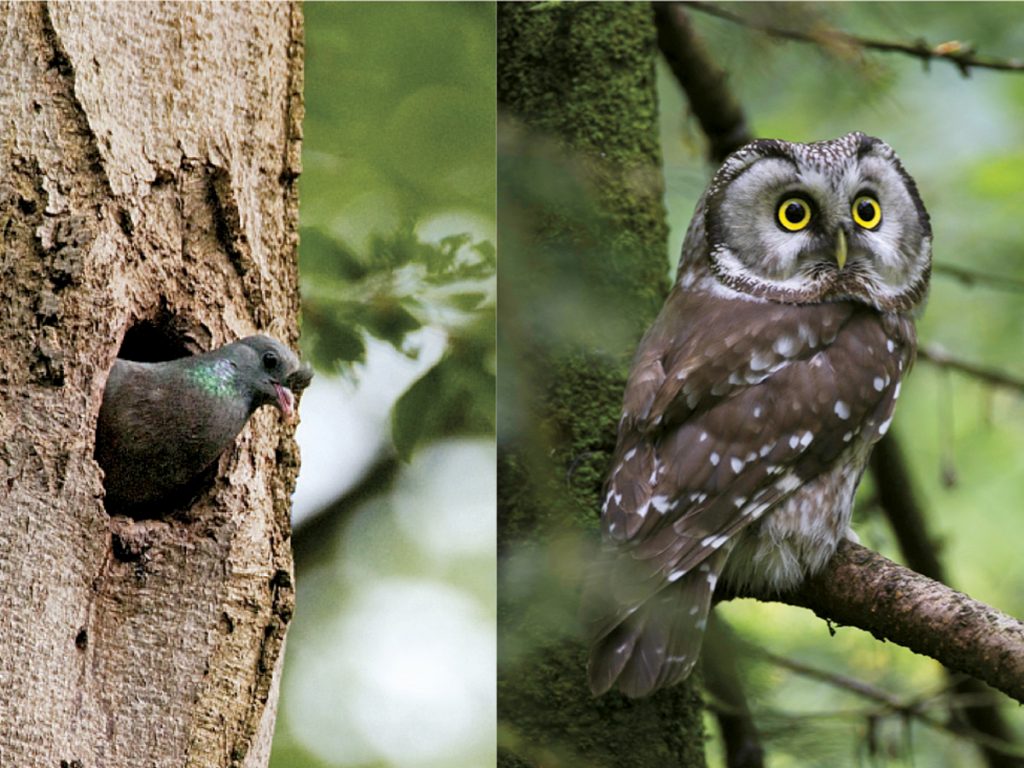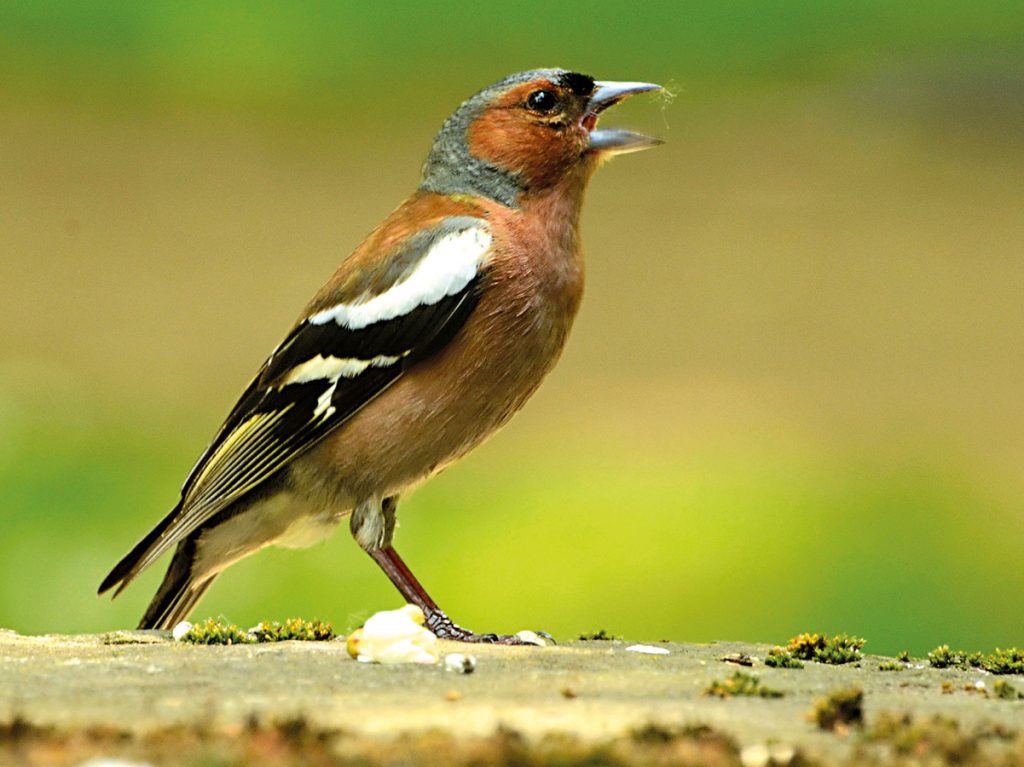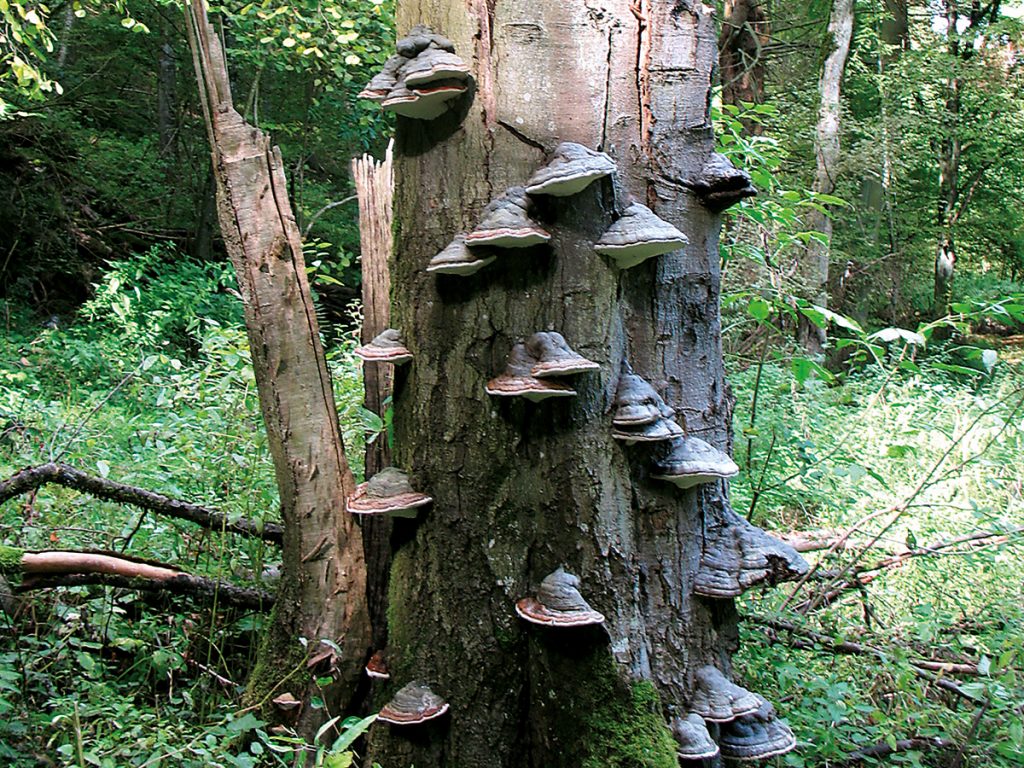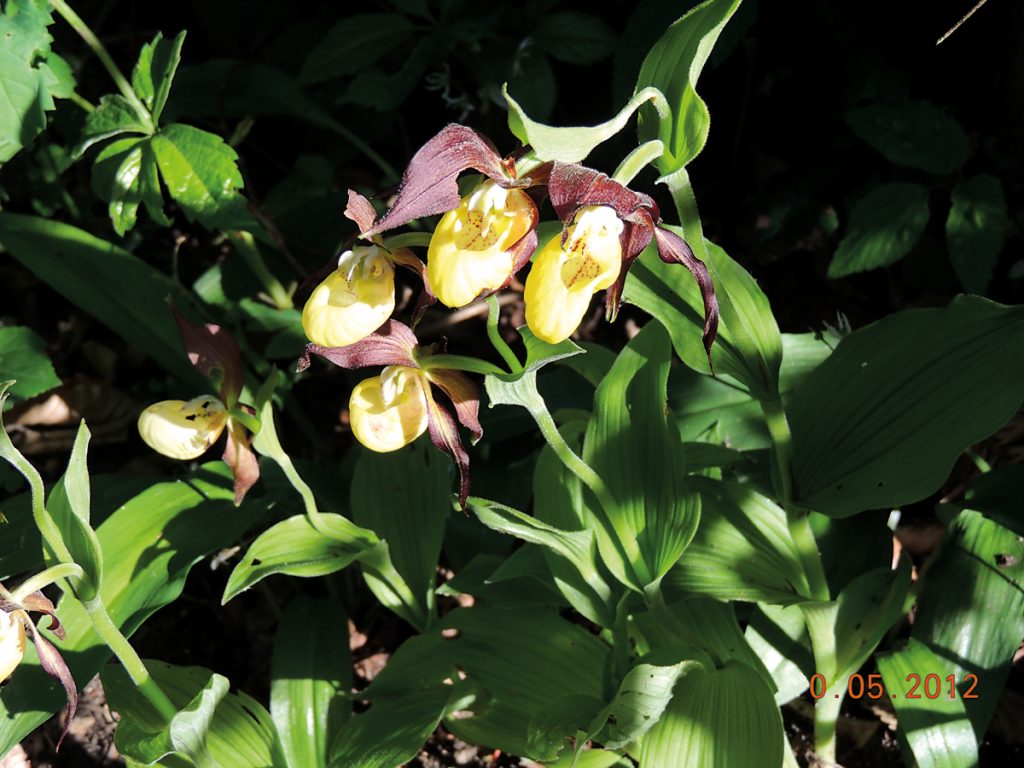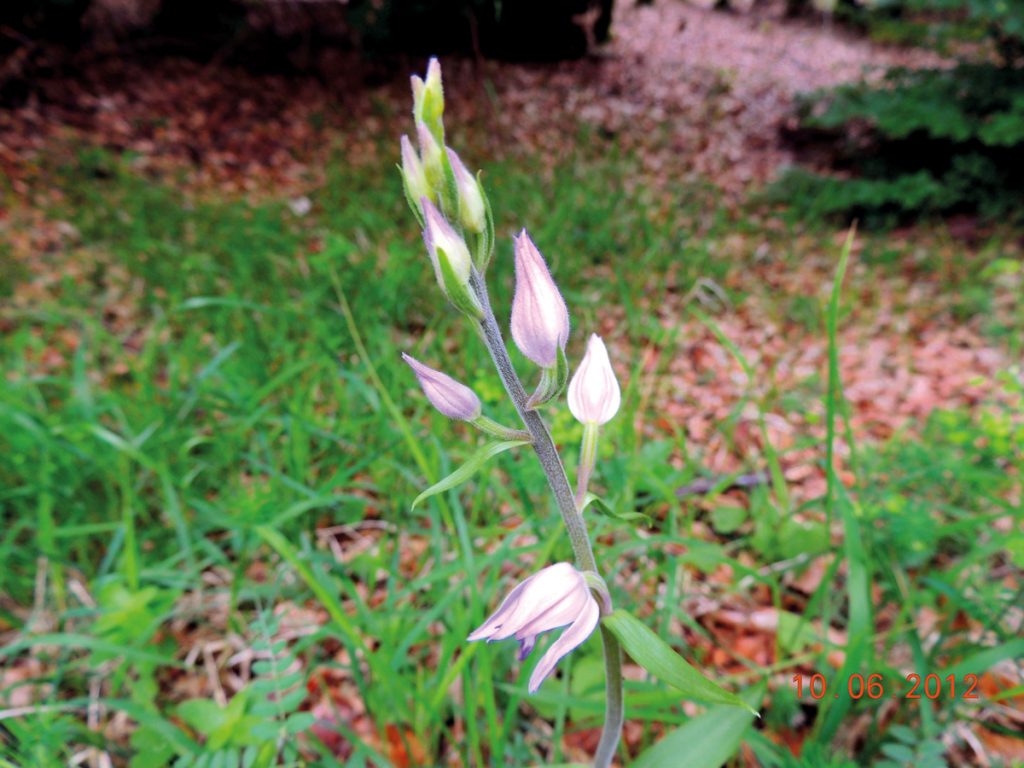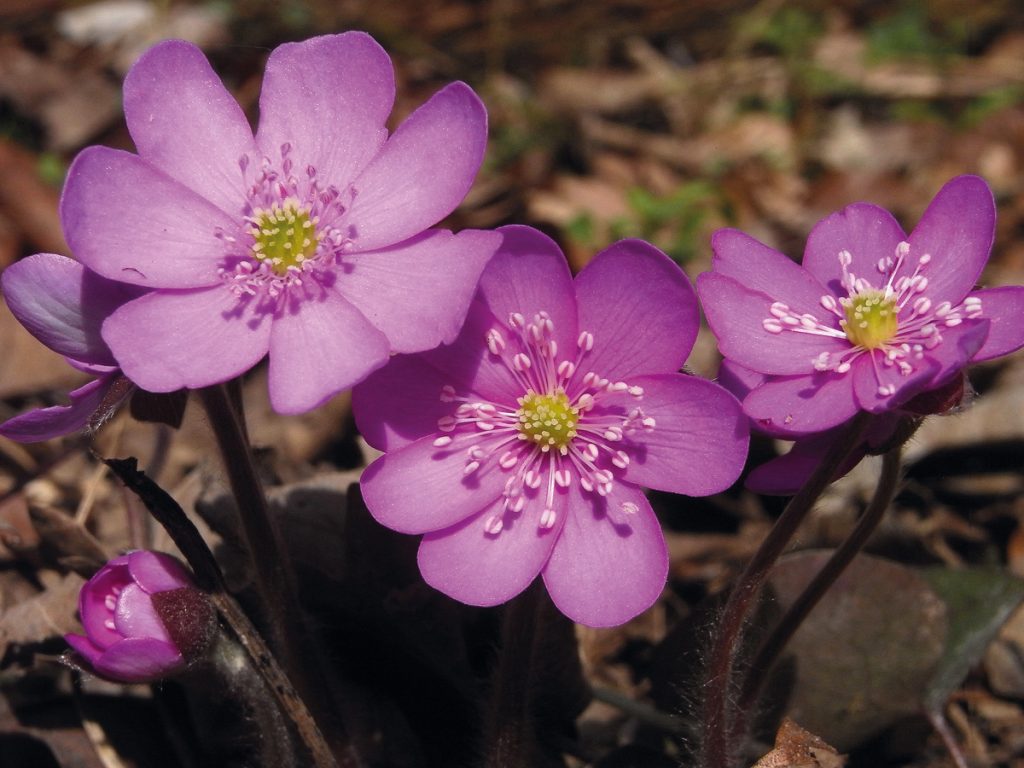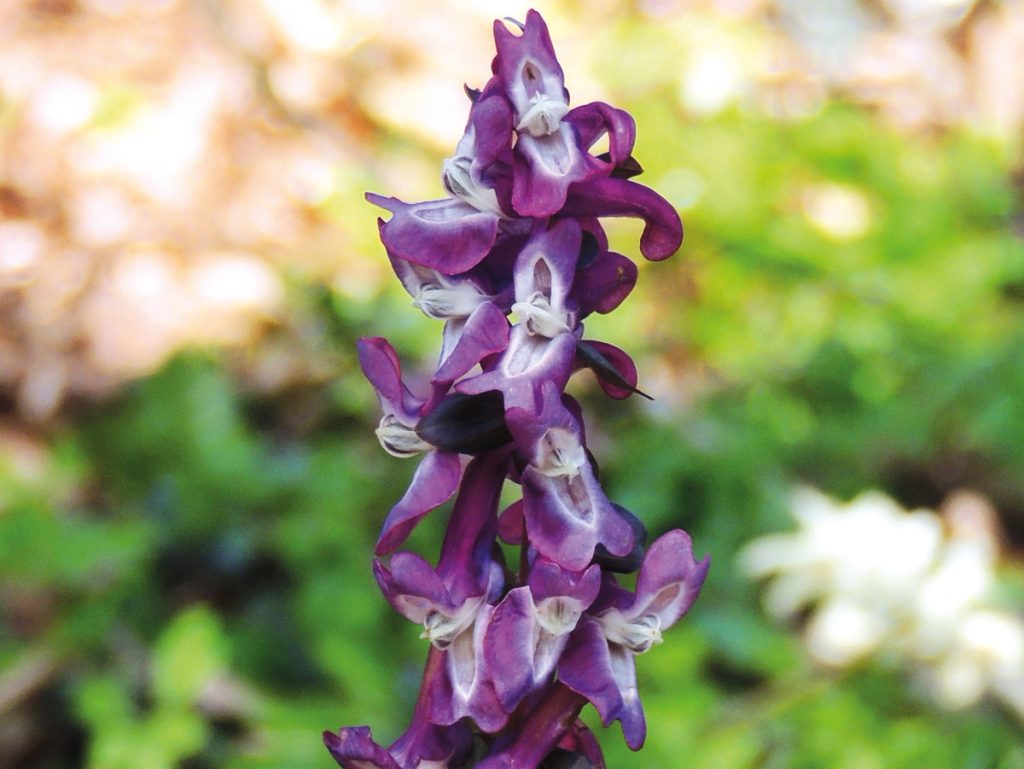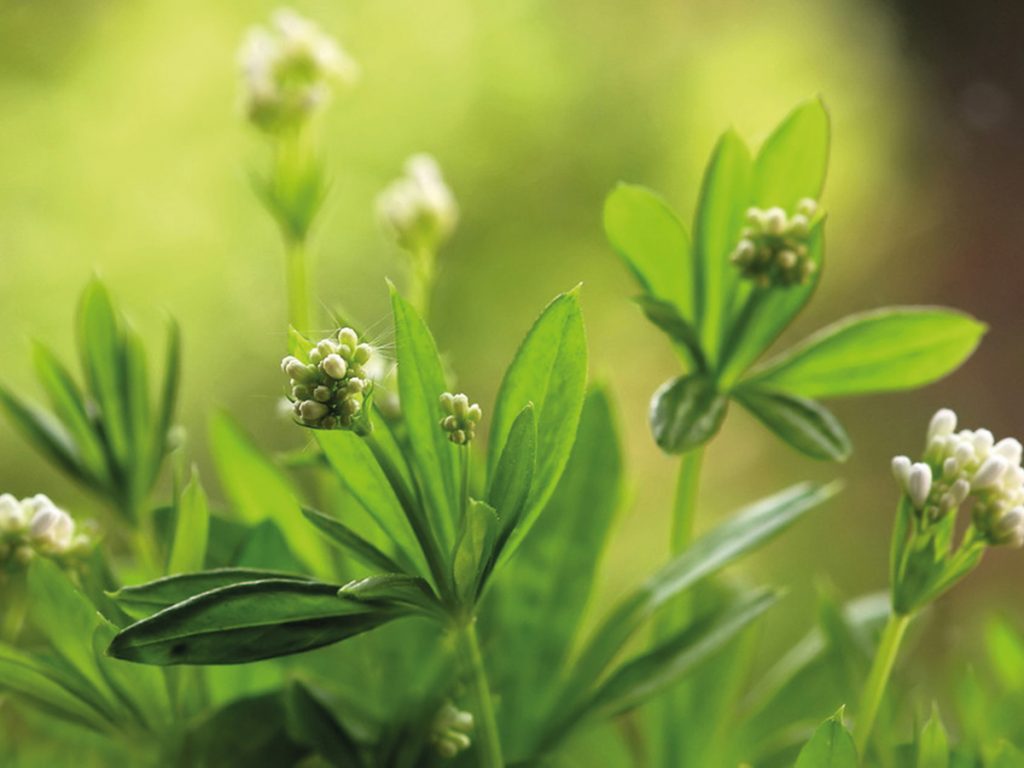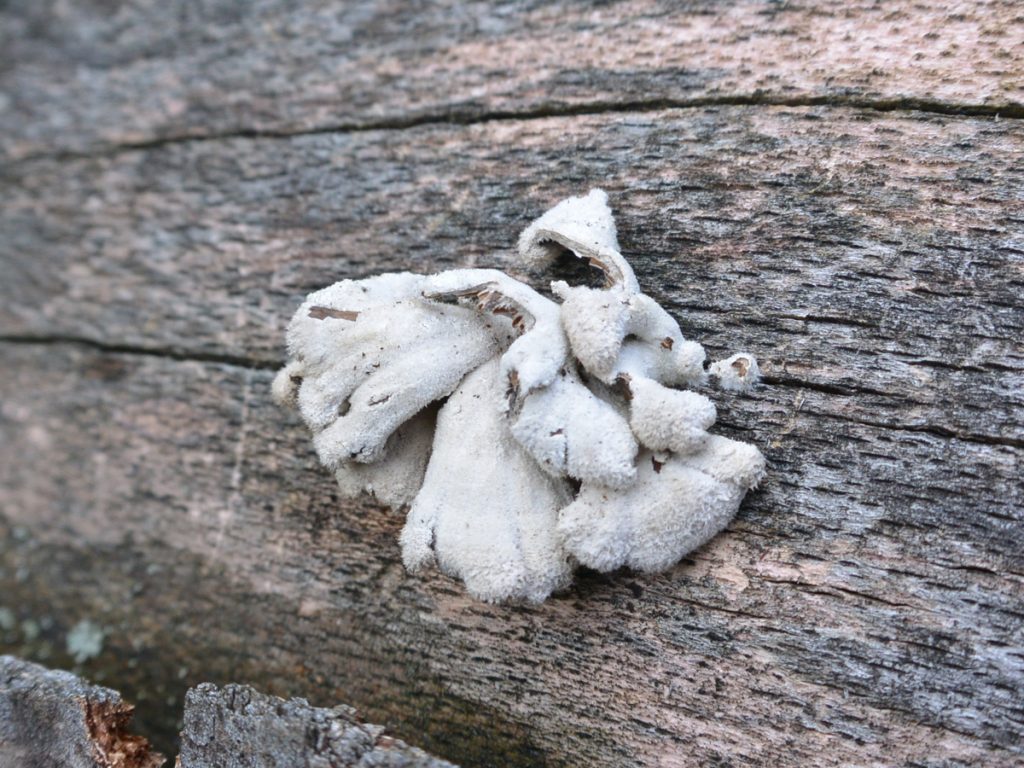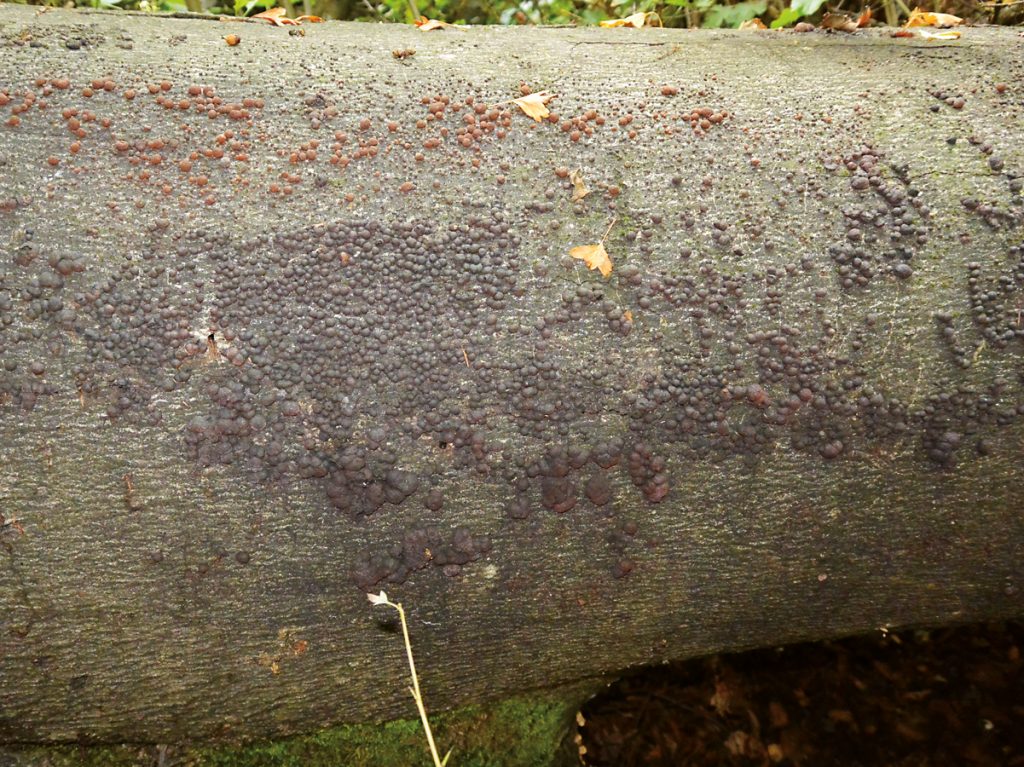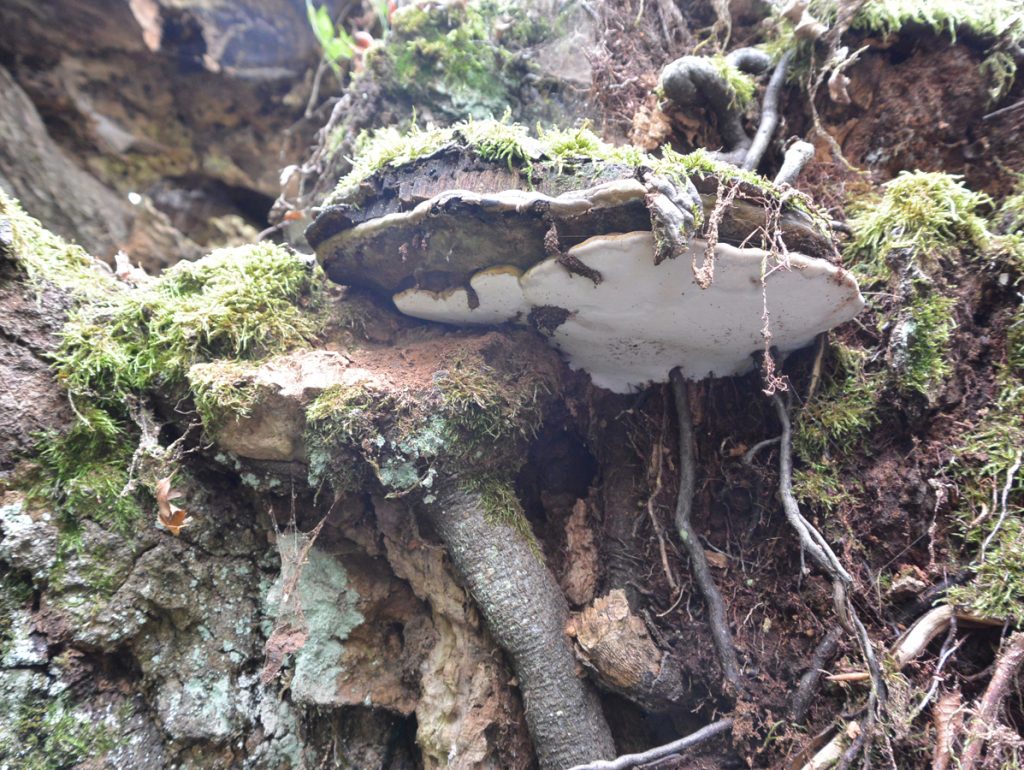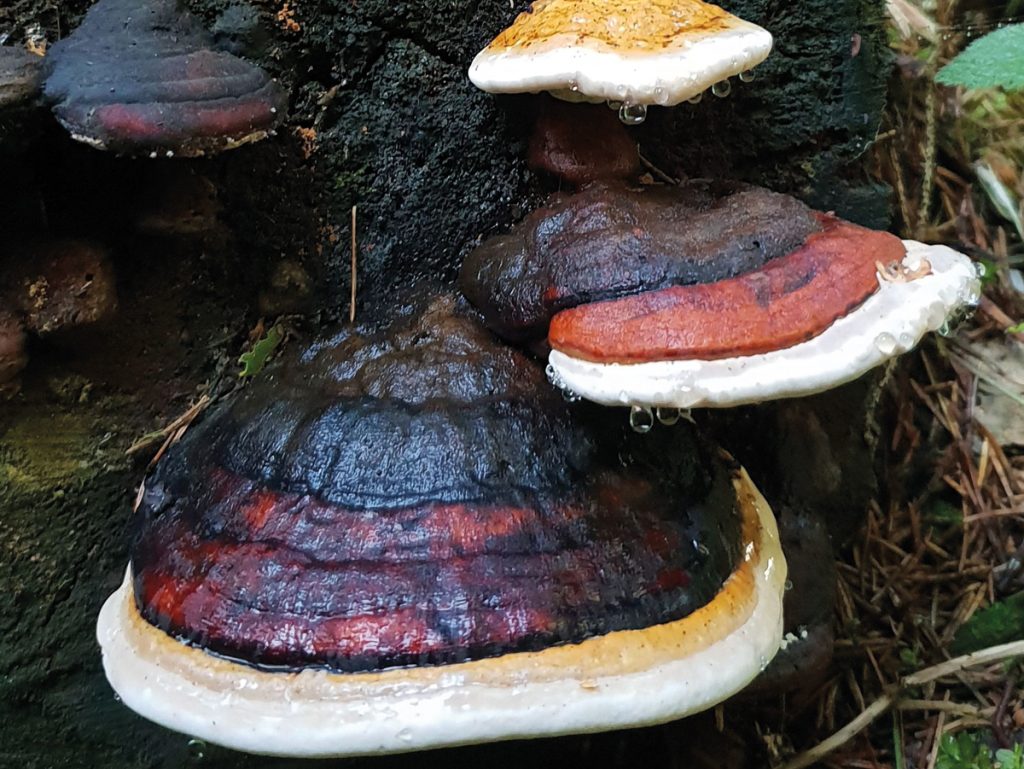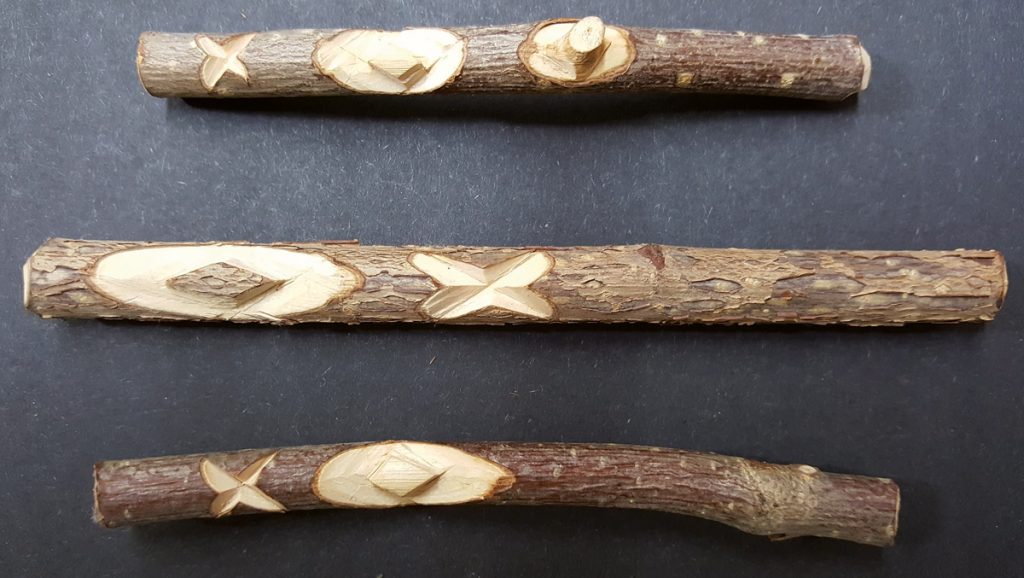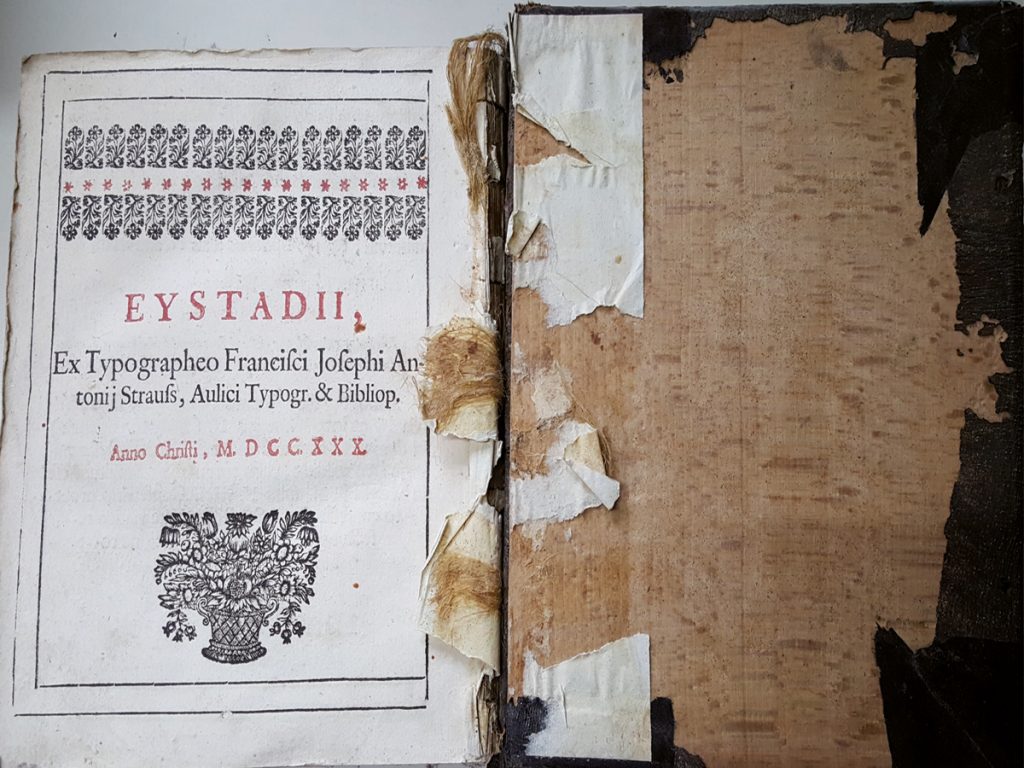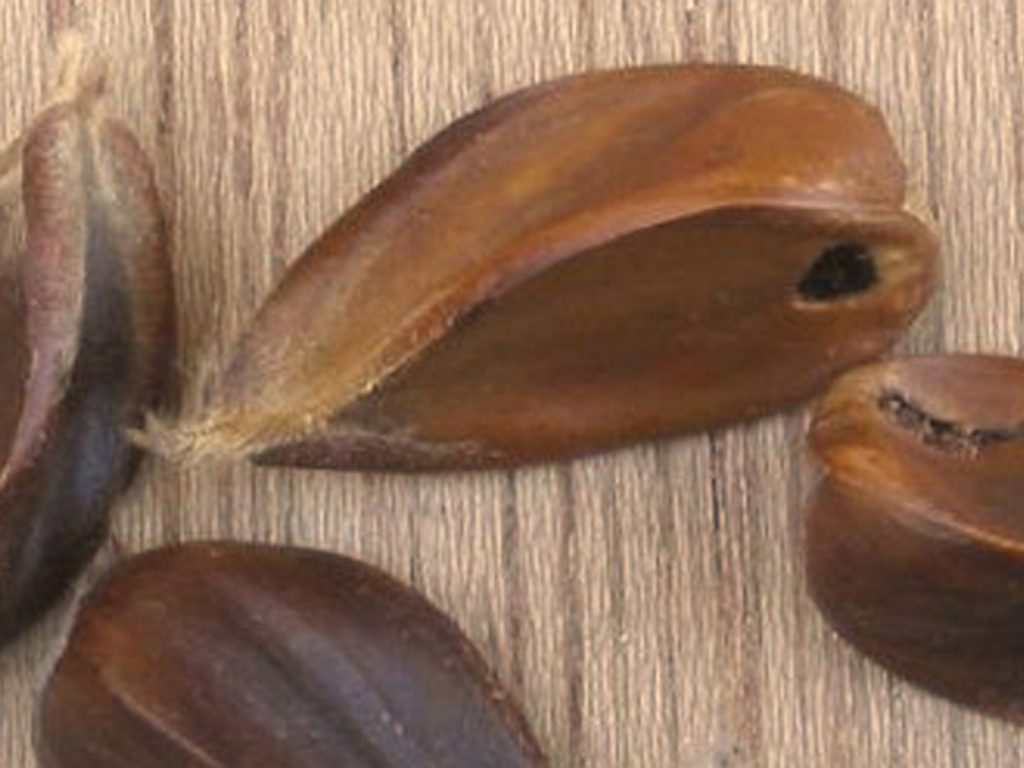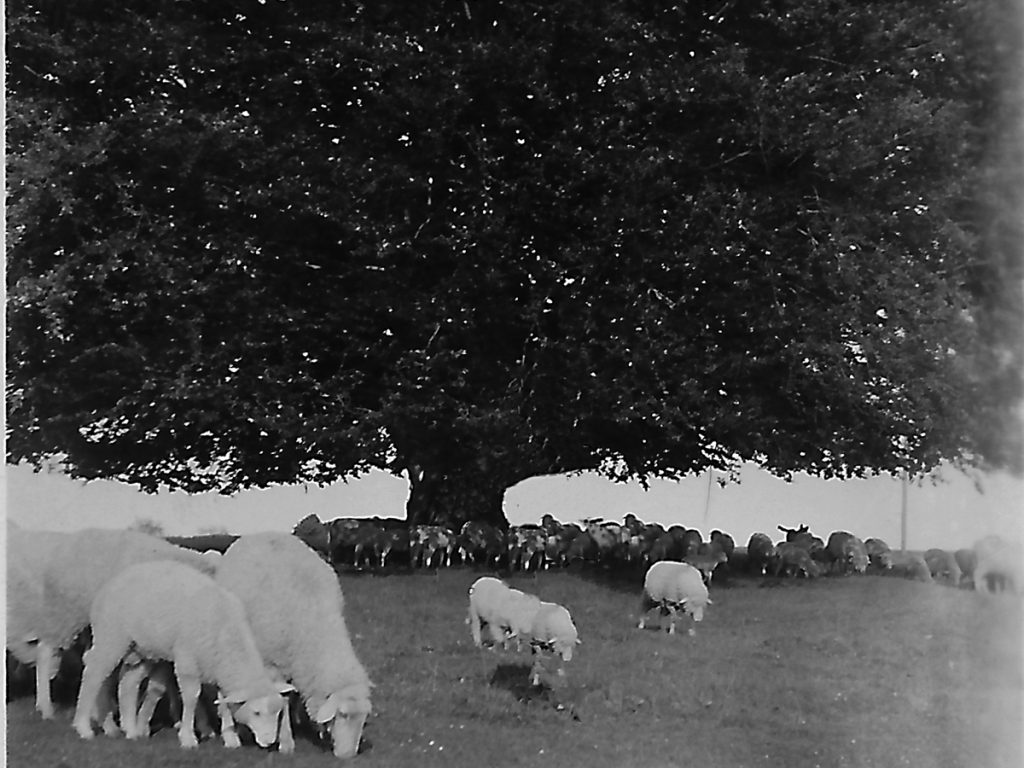Symbiose – Tiere, Pflanzen
Please switch the language by clicking on the flag in the right corner.
Die Buche: Lebensraum für Tiere
Großflächige Buchenwälder ermöglichen die Gründung von großen Mausohrkolonien. In Buchenmischwäldern gibt es für die Mausohren wesentlich mehr Nahrung als in Nadelwäldern. So finden Mausohren vom Frühjahr bis in den Herbst Laufkäfer als sichere Beute. Wenn die Mausohren mit Beginn der Dämmerung zur Jagd ausfliegen, verbringen sie fast die ganze Zeit in Wäldern. Inzwischen ist es sicher, dass flugunfähige, waldbewohnende Laufkäfer einen großen Teil der Nahrung der Mausohren ausmachen.
Die Buche: Pflanzenbegleitung
Orchideen im Buchenwald
Ob sonnenbeschienene, nach Süden orientierte oder schattige, nach Norden gerichtete Hänge, die Orchideen sind treue „Begleiter“ unseres Buchenwaldes.
Unter dem mächtigen Kronendach der Buchen kommt nur wenig Licht am Waldboden an. Deshalb bevorzugen die meisten der hier vorkommenden Orchideenarten helle Standorte wie Stellen mit Kiefern im Buchenwald, Lichtungen und Wegränder.
Am Boden:
Pilze stellen einen wichtigen Faktor beim Abbau von Totholz dar. Liegendes Totholz wird von Organismen, insbesondere von Holz abbauenden Pilzen und zahlreichen Insekten über Jahre hinweg zersetzt. Der Abbau von Holz ist ein langsamer Prozess, der je nach Holzart und Mikroklima (Temperatur, Feuchtigkeit) unterschiedlich viel Zeit in Anspruch nimmt. Auf jeden Fall benötigen die Holzzersetzer aber Jahrzehnte bis Jahrhunderte, bis von einem Baumstamm nichts mehr als Erde übrig bleibt.
Die Buche: Wissenswertes
Buchstabe
Im Mittelalter hat man auf „Buchenstäben“ Zeichen mit besonderer Bedeutung eingeschnitten. Oft waren dies Segenswünsche oder auch Flüche. Daraus lässt sich unser heutiges Wort„Buchstabe“ ableiten, auch der Begriff „Kerbholz“ hängt damit zusammen.
Buch
Noch im 18. Jahrhundert war es üblich, die Buchdeckel aus Buchenholz zu fertigen und mit einem oft reich verzierten Ledereinband zu überziehen.
So ist der Satz „in den Buachen lesen“ gut nachzuvollziehen.
Ortsnamen
In einer jüngeren Rodungsphase des Hochmittelalters hat man Siedlungen auf der Albhochfläche angelegt. Lagen diese in ehemaligen ausgedehnten Buchenwäldern, hat man sie nach diesen benannt. Um sie unterscheiden zu können, gab man ihnen Zusatznamen wie Aschbuch, Arnbuch, Kirchbuch oder einfach auch
nur „Buch“.
Buchenlaub
Waren die Haustiere im Winter im Stall, hat man im Normalfall Stroh als Einstreu verwendet. Wurde dieses knapp, so hat man sich gerne auch mit in großen Mengen verfügbarem Buchenlaub beholfen.
Herstellung von Glas
Zur Glasherstellung brauchte man seit jeher Holzkohle und Pottasche. Beides ließ sich dort leicht erzeugen, wo es ausgedehnte Buchenwälder gab. So war es beispielsweise bei der Wahl des Standortes Grösdorf zum Bau einer Glashütte ausschlaggebend, dass der Ort in einem solchen Gebiet lag.
Gleiches dürfte für die Glashütte in Zandt der Fall sein.
Lebensmittel der Buche
Bucheckern enthalten einen hohen Anteil an Pflanzenöl. Man kann diese in einem Kollergang zermahlen und das gehaltvolle
Öl auspressen.
Hutebuche
So könnte die Geschichte der Bavaria Buche begonnen haben:
Auf einer Kuhweide in einem Bereich mit einem flachen, kaum sichtbaren Felskopf gingen einige Bucheckern auf, die vielleicht der Tannenhäher dort versteckt hatte. Die Sprösslinge wurden immer wieder von den Kühen abgeweidet, bis man den Bereich eine Zeit lang nicht mehr beweidete. Die kleinen Triebe wuchsen empor und es entstand ein „Buchenbusch“, aus dem sich einige Triebe bevorzugt in die Höhe entwickelten und zu einem einzigen Stamm wurden.

